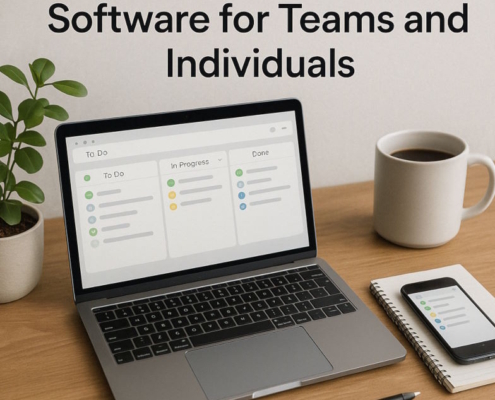Introduction
One of the hardest parts of bookkeeping is resolving uncategorized expenses. Finding them may be extremely time-consuming. It may include making follow-ups on the clients to get the required details and handling them separately. We should consider some of the best methods of accelerating the process. You can then concentrate on offering your clients more worthwhile services.
Uncategorized Expense: What is it?
An expense that shows up in accounting or bookkeeping software but isn’t yet associated with a classification from the list of accounts, such as office equipment, transportation, or labor costs, is known as an uncategorized expense. Uncategorized expenses add a level of ambiguity to the documentation that needs to be handled before you begin closing the books, even if they might not be important on their own.
Manually classifying expenditure in QBO & Xero is a soul-crushing time waster
Although accounting programs like Xero & QuickBooks Online (QBO) can automate some repetitive bookkeeping tasks, they are not very effective at manually classifying expenses. Depending on the quantity and complexity of the transactions, it can take many hours to a few working days to resolve uncategorized expenses for every period, even if you adhere to a month-end close, which minimizes the amount of time they must accrue.
For starters, instead of reporting uncategorized transactions as soon as they happen, QBO and Xero place the burden of finding and fixing them on the accountant. Until you produce a profit & loss (P&L) report and find hundreds of dollars in unidentified costs, they frequently go unnoticed. Once discovered, every uncategorized expense transaction must be examined in detail and reassigned separately. You cannot change them in batches, even if they are multiples of a single transaction type, such as a recurring subscription.
When the appropriate categories for any uncategorized expense aren’t immediately evident and you need to cross-reference the supporting evidence in an attempt to determine them, the process gets even more time-consuming. In the most dire situation, you might need to seek assistance from your customer. That’s frequently the biggest delay of all because you have to:
- Write a formal email outlining the problem.
- Await an answer, which isn’t always given right away.
- If the customer takes a while to respond, follow up.
- When you require more information, provide clarification on any incomplete responses.
- Additionally, modify spreadsheets for clients on their behalf most of the time.
Despite their potential capability, QBO and Xero aren’t ideal for manually addressing unknown transactions. You will undoubtedly spend a longer period on the procedure than you would want if you use those products for all of your bookkeeping tasks.
Categorizing & Reconciling Expenses Quickly
You can utilize software to expedite the process of classifying and reconciling expenses. It will reduce your month-end closure time. You can concentrate on other worthwhile and fulfilling tasks.
- Employ Software to Find Inconsistencies in Expenses
Using software that automatically detects any anomalies and spares you from having to find them yourself is one of the best methods to expedite the uncategorized expense classification process. Software connects to your clients’ ledger files, examines their past financial transactions, and highlights expenses that are treated inconsistently, allowing you to ascertain whether the spending category was entered properly.
For instance, Software can identify and alert you if your client usually records transactions from a supplier as Office Equipment, but the most recent transfer to them was abruptly classified as Miscellaneous.
It is far more difficult to identify these kinds of discrepancies than an uncategorized expense. They might be dispersed across your client’s financial records, merging in with appropriately classified transactions, rather than being gathered in one conspicuous location. Unless you see a difference in your business spending totals from prior quarters, you may not notice a problem, and even then, it takes a laborious manual inspection to pinpoint individual transactions.
The procedure is greatly streamlined by using software that flags all possibly troubling transactions. You instantly receive an inventory of expenses to analyze all at once before providing them to the customer, saving you the trouble of manually contrasting your expense classes to your past information each time.
- Utilize Software to Identify Additional Typical Transaction Errors
Software can indicate more common transaction problems and further expedite your month-end closure, in addition to recognizing spending categories that deviate from established routines.
For example, it may also alert you to the following additional possible issues:
- Missing transaction specifics: Expenses could have a category designated for them, but they may be missing other important transaction details, including a class, address, client, or required attachments, like receipts. You can easily add anything that’s lacking with software.
- Transactions exceeding cash value: A $1,000 Online purchase that included office supplies & raw materials is an example of a transaction exceeding a specific dollar amount that may represent several expenses that ought to be divided into distinct categories. To make dividing them up easier, software can highlight these.
- Transactions are included automatically by a bank regulation: Occasionally, pre-existing rules automatically code bank transactions. For example, all payments made to a professional vendor are classified as professional services. To assist you in confirming that no exemptions are required, the software can flag them.
- Transactions allocated to an originating account: Rather than being assigned to more specialized accounts, transactions are occasionally assigned to more general parent accounts. To assist you in determining if spending should be placed in a different account, software, for instance, can highlight any expenses allocated to Advertising instead of Social Media.
In the end, software drastically cuts down on the number of hours you must spend searching through monetary transactions for various possible issues. If you want to save time on tasks that aren’t really a problem, you can also alter the kinds of transactions it highlights.
- Group Transactions in Batches
The requirement to update every single transaction is one of the most tedious and repetitive parts of bookkeeping with programs like QBO. Even with relatively straightforward modifications, the procedure can potentially take hours when there are a large number of revisions to make. Let’s take an example where you discover that 50 transactions involving the same vendor were incorrectly classified as Supplies, whereas they should have been classified under the Cost of Items Sold.
You would have to click on every transaction, manually change the grouping, click back out, and again continue the procedure several times in order to fix the problem in QBO. An efficient software allows you to designate the new category at the same time by selecting every transaction from the same page. You may have precise financial information in a matter of seconds rather than ten minutes of scrolling back and forth.
Batch categorization not only speeds things up but also guarantees that every transaction change you make is treated consistently, lowering the likelihood that you will make a mistake. Without it, you’re far more likely to disregard a transaction or classify it differently.
- Use the portal to ask clients questions
It can take a lot of effort to find and fix incorrectly recorded transactions by hand. It might be even more time-consuming to get responses from your clients via email. Due to their hectic schedules, small business owners sometimes ignore. They may forget or bury your messages.
Even when clients reply promptly, their responses may be ambiguous or insufficient, which just makes the exchange take longer. You can at last stop sending worksheets to your clients via email using software. Instead, modern software enables you to provide your clients with immediate entry to the platform so you can interact with them in the exact location where you operate. This offers numerous noteworthy advantages, such as:
- Improved communication: You can immediately attach your inquiries to a customer’s bank account stream. This places everything in perspective and makes it much simpler for them to comprehend what you’re talking about.
- Workflows that are seamless: The right software platform allows you to delegate questions and add notes. You can send instant messages to your clients without the need to jump between applications or tabs. It is also possible to make changes in the same place after obtaining answers.
- Automated reminders: You are able to configure automatic emails/texts. It serves as a reminder to your customers to respond to your questions in case they do not do so within the required time.
- Utilize Project Management Tools to Review Management More Quickly
A key component of the month-end closure is the management review, which guarantees that everything is authorized by an executive before being finalized. With conventional systems, that can be difficult, but software for project management can greatly simplify the procedure. The majority of project management systems have the drawback of being completely distinct from the application you use for bookkeeping.
For instance, neither Xero nor QBO offers a project management solution. To maintain organization, you must rely on an outside source. But a software with integrated project management tools lets your team stay on top of everything they’ve been working on while not ever exiting the app. They are also more potent than you might think, with the ability to:
- Making usable templates for the month’s closes: Bookkeeping workflow application enables you to instantly generate, arrange, and monitor subtasks and tasks.
- Assigning and classifying tasks: Software allows you to add tags & categories to tasks so that your team can quickly filter & prioritize them.
- Encouraging cooperation: The latest software does more than just facilitate client communication. You can also use it to communicate with your team and provide localized remarks.
Software streamlines the management review procedure. When the books are prepared for them, supervisors are automatically alerted, and since everything has been consolidated and arranged, it is simple for them to make the required adjustments, offer suggestions, and sign off.































